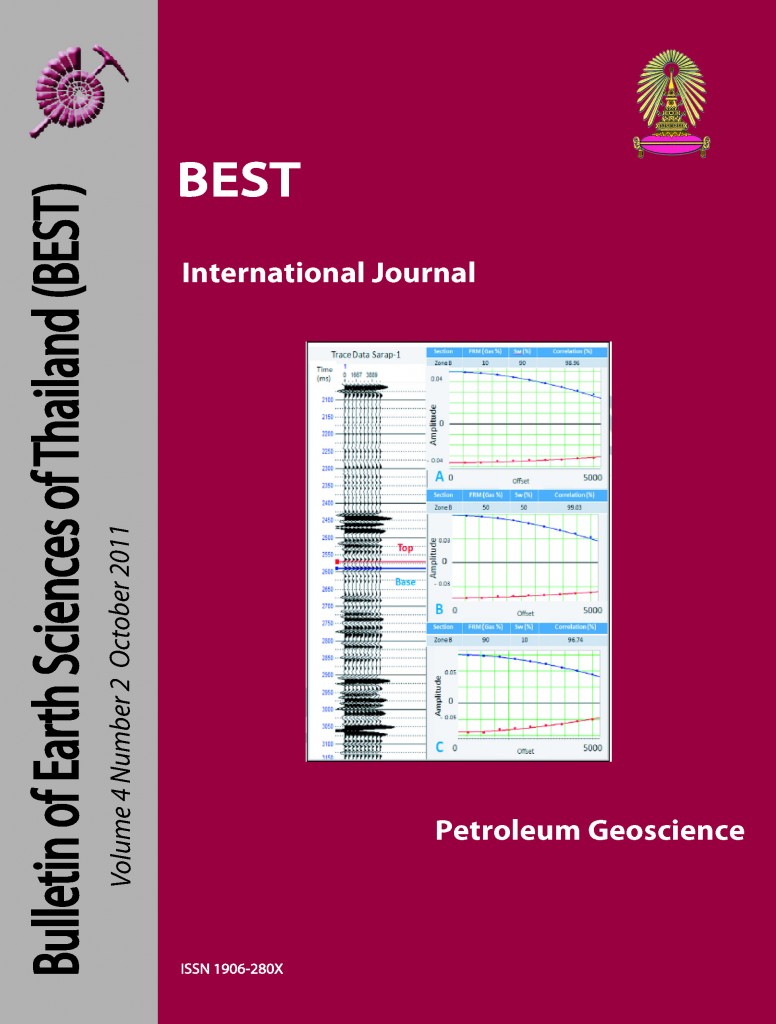Trapping Mechanisms along North Similan and Lanta Trends, Pattani Basin, Gulf of Thailand
Main Article Content
Abstract
Nine exploration wells along the Surin, Lanta, and North Similan structural trends in the northern Pattani Bain show significant variations in pay. To try to understand these variations in pay, analysis of the variations in the petroleum system elements in the area was studied with particular emphasis on trapping mechanisms. 3D seismic data, wireline logs and geochemistry data were used for this study. In the Pattani Basin, the first critical factor of the petroleum system is the structural trap. Wells should be drilled within structural closures to encounter hydrocarbon pays. However, pay count numbers vary considerably even in wells drilled on closed structures. For these wells fault sealing capacity was determined in this study to be the next critical factor that controls variations in hydrocarbon pays. Wells that have high sand- shale juxtapositions tend to have high pay count numbers whereas wells that have high sand- sand juxtapositions tend to have low pay count numbers. The third critical factor was determined to be the length of migration pathway or the distance from mature source rocks. The wells located near mature source rock tend to have higher pay counts on the east side where source rocks have higher maturation based on 1D maturity modeling. Sand distribution does not appear to be a factor in influencing the hydrocarbon pay count. From this integrated analysis, the best area for high pay potential is the eastern basinward side of the study area.
Article Details

This work is licensed under a Creative Commons Attribution-NonCommercial-NoDerivatives 4.0 International License.
Copyright © 2008 Department of Geology, Faculty of Science, Chulalongkorn University. Parts of an article can be photocopied or reproduced without prior written permission from the author(s), but due acknowledgments should be stated or cited accordingly.
References
Allan, U. S., 1989, Model for Hydrocarbon Migration and Entrapment within Faulted Structures: The American Association of Petroleum Geologists Bulletin, v. 73, No. 7 (July 1989), p. 803-811.
Bustin R., Chonchawalit A., 2003, Petroleum Source Rock Potential and Evolution of Tertiary Strata, Pattani Basin, Gulf of Thailand: The American Association of Petroleum Geologists Bulletin, v.81, no. 12 (December 1997), p. 2000-2023.
Kachi, T., Yamada H., Yasuhara K., Fujimoto M., Hasegawa S., Iwanaga S., and Sorkhabi R., 2005, Fault-seal analysis applied to the Erawan gas-condensate field in the Gulf of Thailand: AAPG


